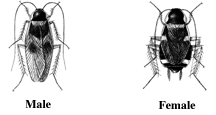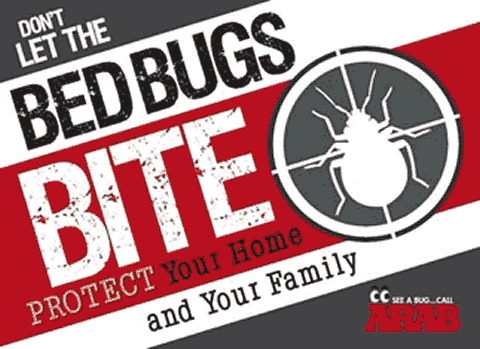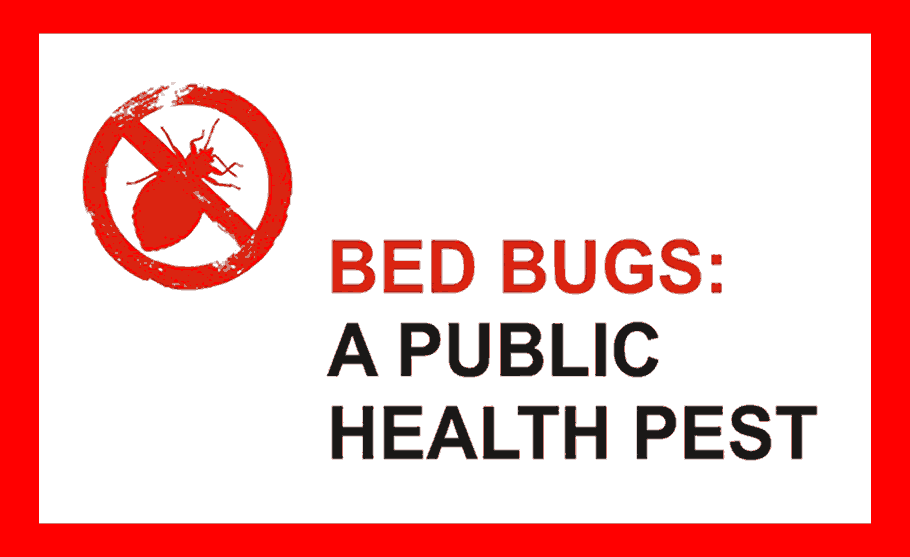Brownbanded Cockroach
Information provded by Ohio State University.
| Common Name | Scientific Name |
|---|---|
| Brownbanded Cockroach | Supella longipalpa (Fabricius) |
 The brownbanded cockroach is more gregarious and more likely to be found in homes, hotels or apartments rather than commercial stores, restaurants or kitchens. These insects feed on starch materials (book sizing and wallpaper paste) and even nonfood materials such as nylon stockings. They prefer to hide in warm, elevated areas near the ceiling, behind wall decorations, pictures, loose wallpaper, in shower stalls, underneath chairs and tables, in closets, beneath or inside upholstered furniture, and in electrical appliances such as TV sets, stereos, radios and toasters. They develop and live throughout the building (especially bedrooms), making control difficult. Roaches can foul food, damage wallpaper and books, eat glue from furniture and produce an unpleasant odor. Some homeowners are allergic to roaches, and the pests can contaminate food with certain bacterial diseases that result in food poisoning, dysentery or diarrhea. Cockroaches can cause childhood asthma.
The brownbanded cockroach is more gregarious and more likely to be found in homes, hotels or apartments rather than commercial stores, restaurants or kitchens. These insects feed on starch materials (book sizing and wallpaper paste) and even nonfood materials such as nylon stockings. They prefer to hide in warm, elevated areas near the ceiling, behind wall decorations, pictures, loose wallpaper, in shower stalls, underneath chairs and tables, in closets, beneath or inside upholstered furniture, and in electrical appliances such as TV sets, stereos, radios and toasters. They develop and live throughout the building (especially bedrooms), making control difficult. Roaches can foul food, damage wallpaper and books, eat glue from furniture and produce an unpleasant odor. Some homeowners are allergic to roaches, and the pests can contaminate food with certain bacterial diseases that result in food poisoning, dysentery or diarrhea. Cockroaches can cause childhood asthma.
Identification
Most cockroaches have a flattened oval shape, spiny legs, and grow long, filamentous antennae. Adult brownbanded cockroaches are light brown to glossy dark brown, are about 5/8-inch long and have wings. Males are capable of flight. Nymphs and females are broad when viewed from above, while the male is slender. The male's wings cover the abdomen, whereas the female's wings are short, exposing the abdomen. These roaches have two light yellow or cream transverse bands across the base of the wings and abdomen (twice banded). These bands may appear irregular or broken, but are usually quite apparent on the nymphs and females. Immature stages are smaller, have undeveloped wings and resemble adults. Egg capsules are about 3/16-inch long, crescent or purse-shaped, and yellowish or reddish-brown.
Life Cycle
Brownbanded cockroach females deposit egg cases in clusters inside furniture, undersides of tables, draperies, wall decorations, shelving and ceilings. The egg capsule contains 14 to 16 eggs; a female produces 10 to 20 cases in her lifetime. Eggs hatch in 1-1/2 to 2-1/2 months, and nymphs develop in 3 to 9 months, with adults living 5 to 6-1/2 months. Females carry the egg capsule for 1 to 2 days, and then glues it to some object. These roaches are active at night, and nymphs and adults jump rapidly when disturbed. Adults are fair flyers. These pests do not require as much moisture as German roaches and tend to avoid light. The roaches are commonly transported in furniture, luggage and other items into homes and soon develop into annoying infestations under warm, humid conditions (80 deg F temperatures preferred). Control is difficult since they live widely dispersed as individuals scattered all over the premises. Treatments must be extensive or directed at population sources determined by bait trapping. Traps can determine infestation severity and monitor chemical controls, especially with brownbanded and German roaches. Adults die within two weeks without food and water.
Control Measures
Integrated Pest Management (IPM)
Integrated Pest Management (IPM) is a systems approach that combines preventive techniques, non-chemical pest control methods and the wise use of pesticides with preference for products that are least harmful to human health and the environment. It is not the total elimination of pesticides but an alternate approach to traditional pest control measures. Complete reliance, in the past, on pesticides alone for pest control allowed certain pests to develop resistance, created potential human exposure to harmful chemicals, produced unsound environmental contamination, and created a threat to nontarget species and pesticide waste. IPM consists of routine inspection and monitoring with treatment only when pests are actually present, thus reducing traditional, routine pesticide application treatment (calendar date sprays) whether pests were present or not.
By following a cockroach IPM plan, cockroach activity is monitored using sticky traps or glue boards. These monitoring stations are placed throughout a structure where roaches are likely to be found such as in dark places along cabinets, walls, under appliances, on pipes, etc., in bathrooms and kitchens. Any tight cracks about 3/8 inch or smaller are good cockroach habitats. Monitoring indicates whether roaches are present and if control practices are working. IPM tools include glue boards, baits, vacuum cleaners, caulking, insect growth regulators (IGRs), etc.
Detection
Brownbanded cockroaches can be detected by examining the premises after dark with a flashlight. During the day, probing hiding places with a wire will expose roaches. Look beneath tables, chairs, dressers and chests, behind pictures, on rough plaster walls and ceilings. One may find tiny black droppings or castoff skins where they have fallen from above onto shelves or ledges. They dislike light and are not normally seen during the day. Household sprays of pyrethrins applied to hiding places will flush out roaches, sometimes killing them if they contact the spray.
Prevention and Sanitation
Since brownbanded roaches commonly hitchhike into the home, it is important to inspect furniture, clothing, sacks, cartons, boxes, etc., brought into the home. Destroy any roaches present. Sanitation is critical in roach control. They do not require as much moisture as the German cockroach, which explains their presence in rooms other than the kitchen or bathroom. Seal openings with putty or plastic wood.
Insecticides
Apply chemicals at roach hiding places. Enter a dark room quietly, turn on the light and watch where the roaches run. Spot treat these hiding places and known pathways. Do not treat entire walls or ceilings. Roaches may hide behind picture frames, high on walls and ceilings, in light switches, inside the motor compartment of refrigerators, and other appliances, behind window & door frames, in valances above windows, in radio and TV cabinets, and around closet & bookcase shelves. Surfaces where food is prepared should not be treated. Buildings with multiple dwellings usually require the treatment of each unit.
There are numerous cockroach insecticide formulations. Some are labeled "general use" for homeowner application, and others are labeled "restricted use" for professional pest control or licensed, certified pesticide applicators only. Before using any insecticide, always READ THE LABEL and follow directions and safety precautions.
Dusts such as bendiocarb (Ficam D), boric acid powder, pyrethrins (Drione) or silica aerogel (Dri-Die) can be applied with a puff duster into hiding places normally hard to reach with a spray.
Sprays, either oil-based or water emulsion, are applied as spot or crack and crevice treatments. These include propoxur, acephate, chlorpyrifos, diazinon, permethrin or resmethrin. Only the licensed certified pest control applicator may apply bendioarb, propetamphos, trichlorfon, cyfluthrin, cypermethrin, deltamethrin, esfenvalerate, lambda-cyhalothrin, tralomethrin and bifenthrin. Insect growth regulators or IGRs include hydroprene (Gentrol) and pyriproxyfen (Archer, Nylar) which act on immature growth stages by contact or ingestion, disrupting molting and development to fertile adults. (A combination of an IGR followed up by use of a bait is often effective.) Some still use contact insecticides in mist or ULV (ultra-low volume) machines to treat the entire indoor area. Open all drawers and closet doors so roach hiding places can best be treated. However, the trend is toward less sprays and aerosols and more IGRs and baits.
Baits
Certain segments of the public may prefer baits to sprays such as schools, hospitals, office buildings, etc. Baits include pastes, gels, particle baits and bait stations.
Bait advantages: low hazard (toxicity) to people; suited for sensitive accounts; IPM oriented; offer effective control. Disadvantages: high bait cost; precise placement required; not cost effective in heavy roach infestations.
Sticky traps have openings at both ends with the inside surface covered with a very sticky adhesive and slow-release food attractant. Properly placed traps, to and from roach hiding and feeding areas, can catch numerous adults and nymphs daily, especially brownbanded and German cockroaches. Traps are best used along with preventive and insecticidal applications to monitor populations. Trapping can determine haborage areas and infestation severity, monitor effectiveness of pesticide applications, and detect any roach population increases that may require additional pesticide treatments.
Fumigation is seldom used but will clean out a cockroach infestation. It must be applied only by a licensed, certified pesticide applicator.
If a severe cockroach infestation develops or if you are in doubt as to the control measures to use, contact a reputable, licensed pest control firm who has the chemicals, training and experience to do a thorough job.
Contact Us ~ We can help!
Hours of operation: Monday through Friday 7:30 A.M. to 4:00 P.M. EST
Arab Pest Control, a division of Lewellen Services, Inc.
232 West Main St., Logan, OH 43138
800-654-8870
![]()
![]()


![]()
Serving Central And Southeastern Ohio Since 1980 • Family Owned And Operated• Fully Licensed By The State And Bonded And Insured. • Termite Warranties • Licensed Technicians • Extensive Training and Retraining• Uniformed Technicians• Marked Vehicles• All Pest Services Offered• Able To Tailor Services To Fit Your Needs• Convenient Hours• Polite And Courteous Staff • We Use The Up To Date Chemicals And Treatment Methods To Protect Your Family And Pets • Many Treatment Services Offered• Senior Citizen Discounts





